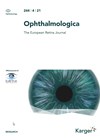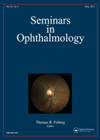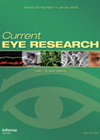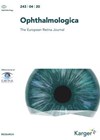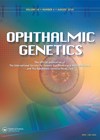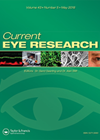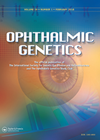
Journal Reviews
Characteristics of bilateral retinal detachment
This was a retrospective study based at a tertiary centre which analysed the specific characteristics of bilateral Rhegmatogeous detachment, taken from the review notes of 300 patients (600 eyes) who had bilateral retinal detachment (RD) surgery between January 2005 and...
Does paediatric rhegmatogenous retinal detachment (RRD) obey Lincoff’s rule (LR)?
This was a retrospective study where 98 paediatric patients with RRD were identified through surgery records. Forty case sheets with complete record of ocular examination and surgical findings were analysed. Visible or suspected preoperative retinal break identified using the LR...
Impact of COVID-19 on primary retinal detachments
This study aimed to describe the impact of the COVID-19 pandemic on the presentation characteristics, timings, and surgical decisions for primary rhegmatogenous retinal detachment (RRD). The cohort included all patients who presented to a Portuguese centre over a two-year period,...
Cystoid macular oedema following retinal detachment surgery
There are limited studies examining the incidence and risk factors for postoperative cystoid macular oedema (CMO) following rhegmatogenous retinal detachment (RRD) repair. Postoperative CMO is thought to be due to pro-inflammatory state, where numerous cytokines lead to tight junction dysfunction,...
Effects of ‘inverted U method’ Nd:YAG laser posterior capsulotomy on anterior segment and IOL tilt
The study aimed to investigate the effects of the ‘inverted U method’ Nd:YAG laser posterior capsulotomy on anterior segment parameters, decentration and tilt of intraocular lens (IOLs) and visual acuity in 76 patients with posterior capsular opacification (PCO) after previous...
Endo-illumination-aided SB combined with IVT hyaluronate for RRD
The authors report a retrospective non-randomised control trial that evaluated the efficacy and safety of 25-gauge illumination-aided scleral buckling (SB) combined with hyaluronate injection for the treatment of rhegmatogenous retinal detachment (RRD). Forty-five cases were included in this study. Twenty-five...
Silicone oil in rhegmatogenous retinal detachment
Silicone oil (SO), used in complicated retinal detachments, is associated with complications such as cataract, increased intraocular pressure (IOP), keratopathy, cystoid macular oedema (CMO), epiretinal membrane (ERM) and loss of vision. Emulsification of oil can also lead to migration of...
Congenital aniridia with or without retinal detachment
The authors present the clinical and molecular genetic evaluations performed on a large Iranian pedigree with 26 aniridia affected patients in four generations and some with retinal detachment. Members of the family affected with aniridia were invited to participate after...
Vitrectomy in retinal detachment associated with choroidal detachment
Hypotony, posterior retinal breaks, longer axial lengths and total retinal detachments (RD) are risk factors for development of RD associated with choroidal detachment (RRDCD). This study retrospectively analysed the anatomic outcomes and prognostic factors of vitrectomy in 175 patients with...
Correlation between anti-retinal antibodies and proliferative vitreoretinopathy (PVR)
The pathological basis of PVR is not clearly understood and there are no effective medications targeting this condition. This cross-sectional study looked at the possible association of anti-retinal antibodies with patients with PVR and retinal detachment (RD). Aqueous and vitreous...
The effect of everolimus on retinal pigment epithelium and proliferative vitreo-retinopathy
The principal cells involved in proliferative vitreo-retinopathy (PVR) are retinal pigment epithelial cells (RPE). Everolimus is a drug used in renal cell carcinoma which targets and inhibits a key regulatory protein in cancer (mTOR). In this study, the authors investigated...
Hereditary profile of retinal detachment
This review sought to clarify some of the heritable elements of rhegmatogenous retinal detachment (RRD). The familial element of RRD is well established, with the sibling recurrence risk ratio being 2.1 (Mitry and colleagues), and the parent-offspring recurrence risk ratio...

